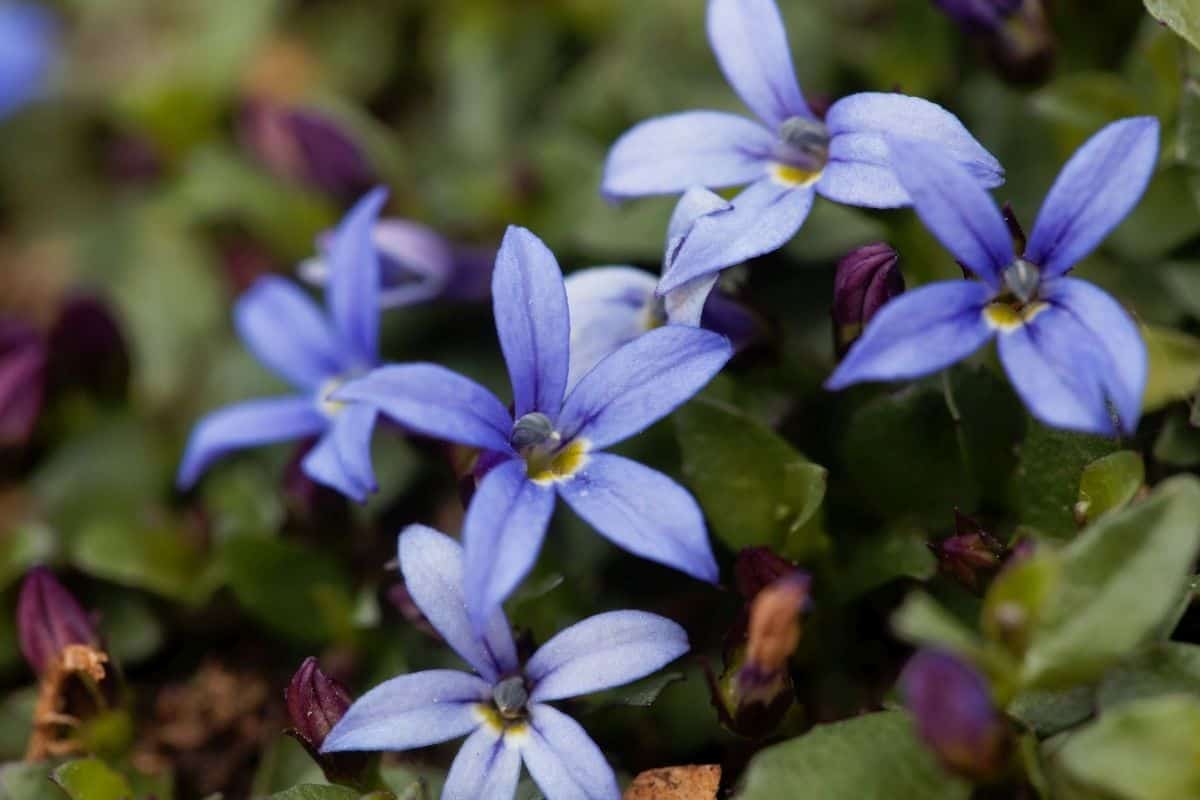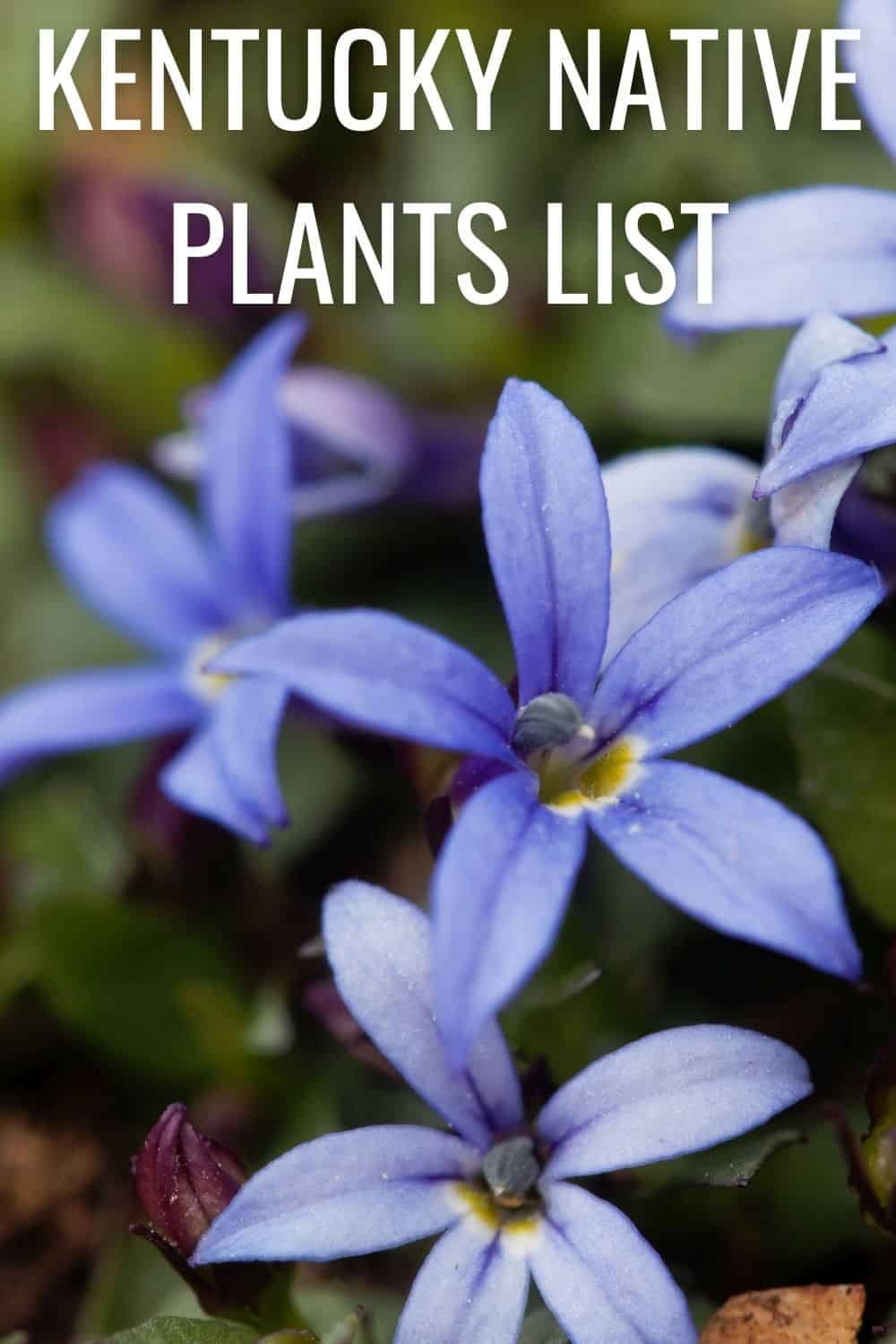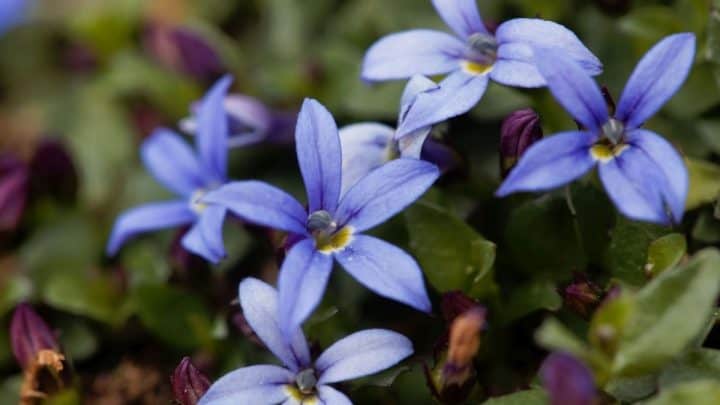The Bluegrass state is one with an impressive list of plants that call the area home. The Kentucky native plants list includes far more than just the bluegrass that the state is named after. The lush nature of the state and its many natural areas mean that there is a wide variety of plant life perfectly suited for the state.

Kentucky Native Plants List
The original bluegrass referred to in the state nickname is a type of grass that grows throughout the state. It has stalks with a tiny tint of bluish-purplish when it’s time to go to seed. This is just one of the amazing plants this state has to offer.
1. White snakeroot (Ageratina altissima)
White snakeroot is a herbaceous perennial that grows in clumps. It grows many white, fluffy flowers with flat tops in both the summer and fall. Branching stems that grow erect support the multitudes of bright-white flowers.
Leaves resembling nettle are grayish-green and have toothed edges. White snakeroot is a great plant for landscaping because it’s a late-bloomer and can add a pop of white to a flowerbed after the other flowers are gone for the year.
Plant it in partial shade and in soil that is moist and rich in organic material. There are no serious problems with pests, diseases, or deer.
2. Blue star (Amsonia tabernaemontana)
Blue star is a flowering plant that blooms with blue flowers shaped like stars. Dark-green foliage changes to golden leaves in the fall.
The flowers bloom in the late spring and into the summer. It is resistant to insects and diseases as well as deep. The blue star grows in clumps and will grow to be between 2′ and 3′ tall.
Plant it in partial shade to full sun and in average soil that drains well, but it will also tolerate clay and drought. When it’s grown in partial shade, it often flops over and needs to be staked. Plant it in full sun to keep it upright without staking. In the right space, this plant is known for being very low maintenance.
3. Big bluestem (Andropogon gerardii)
Big bluestem is a perennial grass that forms clumps with its upright-growing stems. When it starts growing in the spring, it’s blue-green in color before it becomes a deeper green during the summer and then turns orange-red or orange in the fall. Sometimes, it even has a tint of purple in the fall.
It blooms in the late summer with dark-purple flowers that grow in clusters. This tall plant grows up to 4′ to 6′ tall and attains a width of 2′ to 3′. When it’s kept happy, it will self-seed.
Plant it in full sun and in soil that is either dry or has medium moisture and drains well. Big bluestem will grow well in a range of soil conditions.
4. American groundnut (Apios Americana)
American groundnut is an unusual-looking flowering plant that has unique blossoms. This perennial is a climbing plant that grows both flowers and edible fruit. The flowers are light brown on the outside and have reddish-brown on the inside.
Scented flowers bloom in the mid-summer through the fall. In the late summer, this plant produces a bean that is about 2″ to 4″ long. Large, white tubers also grow from this plant, and they are edible as well. In Japan, this plant is cultivated as a food source.
Plant it in full sunlight or a small amount of shade in moist soil, and expect it to grow to between 8′ and 15′ tall.
5. Jack in the pulpit (Arisaema triphyllum)
Jack in the Pulpit is an exotic-looking plant that grows incredible flowers that stand out no matter where they’re planted. This perennial blooms in mid-spring through late-spring and is known for the flowers that have a large hood (spathe) that is green and purple with purple stripes. That hood covers a “jack” (spadix) that has small purple to green flowers on it.
Green berries with a glossy shine also grow on the spadix. These berries eventually turn bright red in the summer. The plant needs fertile soil that is moist or wet and should be planted in either partial shade or full shade. Jack in the pulpit can grow to be 1′ to 2′ tall.
6. Red chokeberry (Aronia arbutifolia)
Red chokeberry is a hardy plant that looks good in all seasons. It’s a shrub that is semi-evergreen and has white and pale pink flowers in the spring. Dark green glossy leaves transform into bright red in the fall.
In the late summer, it grows bright red berries that stay in place into the winter. Plant it in partial shade to full sun in average soil that has good drainage.
Red chokeberry can be grown in a number of soil types and will grow in both dry and moist soils. This plant is a slow grower, but it will eventually grow to be between 5′ and 10′ tall. Use these in the back of flowerbeds for a tall plant that features amazing colors.
7. Swamp milkweed (Asclepias incarnata)
Swamp milkweed is a perennial that is well known for its clusters of light purplish-pink flowers. In the fall, they grow pretty seed pods that last into the winter. They are also known for attracting monarch butterflies to them, and they also attract bees and other butterflies as well as helpful insects.
With the number of monarchs down sharply over the past two decades, many people are planting swamp milkweed to help their species survive. It’s usually free from pests and disease, and it thrives in full sunlight. Expect them to need little to no maintenance as long as the soil is medium-moisture to wet and in well-draining soil.
8. Pawpaw (Asimina triloba)
Pawpaw can be a shrub or a small tree, and it has large, oval-shaped leaves that can reach 6″ to 12″ long. In the fall, the leaves turn yellow and golden.
The fruit that grows from this tree is well-known in many regions as a tasty and useful fruit. Purple, cup-shaped flowers bloom in the spring even before the leaves have sprouted. After that, the plant grows its green fruit which eventually becomes black when it matures. Fans of the pawpaw say it tastes similar to a banana.
It grows to be up to 15′ to 30′ tall and just as wide. Plant it in partial shade or full sun and in soil that drains well and is medium-moist to wet for this plant to thrive.
What a great list of native plants you can use to add plant variety to your landscape.
Native Flowers Of Other States












Wisconsin Native Plants List: 18 Beautiful Flowers For Gardening
Tuesday 14th of February 2023
[…] Kentucky native plants […]